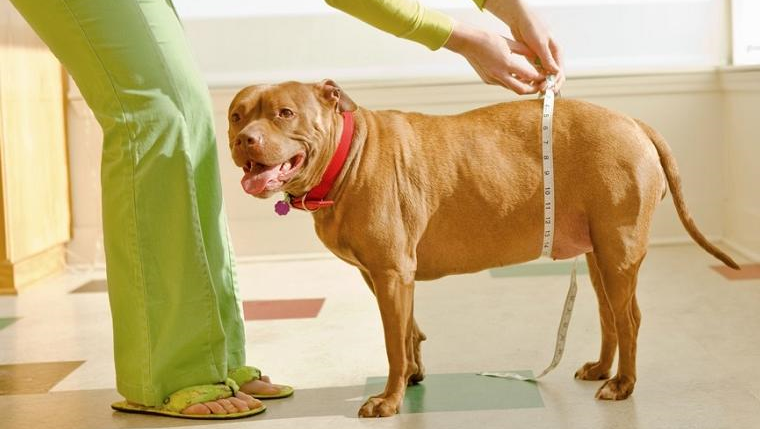
How Can I Tell If My Dog Is Overweight?

Nowadays, many families treat their pet dogs as part of the family, sometimes even giving them the same care and attention they would give to their own children, providing them with the best food and living conditions. However, this overindulgence can sometimes lead to dogs becoming overweight or even obese. While many people find chubby dogs cute, the reality is that dog obesity can harm their health and even shorten their lifespan. This article will explore the causes of dog obesity, how to assess whether your dog is overweight, the health risks it poses, and how to help your dog lose weight, all in an effort to help pet owners take better care of their beloved pets.
Owners can assess if their dog is overweight by visually observing and touching the dog. If the dog's waistline disappears, its ribs are difficult to feel, or if its belly sags noticeably, these could be signs of obesity. You can refer to a dog body condition score (BCS) chart, which categorizes a dog’s physique into five levels (from underweight to obese), providing a clear way to compare your dog’s body shape.
2. Compare with Breed-Standard Weight
Different breeds have standard weight ranges. Owners can check the relevant breed's weight guidelines and compare it to their dog’s current weight. If your dog’s weight falls outside the standard range, it may be time to take action. Below is the standard weight range for some common dog breeds, provided for pet owners' reference.
• Small Breeds
① Chihuahua:
Standard weight: 1.5–3 kg
Characteristics: Small in size, fast metabolism, but can easily gain weight if overfed.
② Toy Poodle:
Standard weight: 2–4 kg
Characteristics: Intelligent and active, requires adequate exercise to avoid obesity from excess treats.
③ Yorkshire Terrier:
Standard weight: 2–3 kg
Characteristics: Small but energetic, requires careful calorie management in their diet.
④ Pomeranian:
Standard weight: 1.8–3.5 kg
Characteristics: Dense coat, prone to weight gain due to lack of exercise.
• Medium Breeds
① Pembroke Welsh Corgi:
Standard weight: 10–14 kg
Characteristics: Short legs and long body, prone to obesity from overfeeding and lack of exercise.
② French Bulldog:
Standard weight: 8–14 kg
Characteristics: Prone to gaining weight, requires strict diet control and increased exercise.
③ Beagle:
Standard weight: 9–11 kg
How to Determine If Your Dog Is Overweight?
1. Daily ObservationOwners can assess if their dog is overweight by visually observing and touching the dog. If the dog's waistline disappears, its ribs are difficult to feel, or if its belly sags noticeably, these could be signs of obesity. You can refer to a dog body condition score (BCS) chart, which categorizes a dog’s physique into five levels (from underweight to obese), providing a clear way to compare your dog’s body shape.
2. Compare with Breed-Standard Weight
Different breeds have standard weight ranges. Owners can check the relevant breed's weight guidelines and compare it to their dog’s current weight. If your dog’s weight falls outside the standard range, it may be time to take action. Below is the standard weight range for some common dog breeds, provided for pet owners' reference.
• Small Breeds
① Chihuahua:
Standard weight: 1.5–3 kg
Characteristics: Small in size, fast metabolism, but can easily gain weight if overfed.
② Toy Poodle:
Standard weight: 2–4 kg
Characteristics: Intelligent and active, requires adequate exercise to avoid obesity from excess treats.
③ Yorkshire Terrier:
Standard weight: 2–3 kg
Characteristics: Small but energetic, requires careful calorie management in their diet.
④ Pomeranian:
Standard weight: 1.8–3.5 kg
Characteristics: Dense coat, prone to weight gain due to lack of exercise.
• Medium Breeds
① Pembroke Welsh Corgi:
Standard weight: 10–14 kg
Characteristics: Short legs and long body, prone to obesity from overfeeding and lack of exercise.
② French Bulldog:
Standard weight: 8–14 kg
Characteristics: Prone to gaining weight, requires strict diet control and increased exercise.
③ Beagle:
Standard weight: 9–11 kg
page 1



